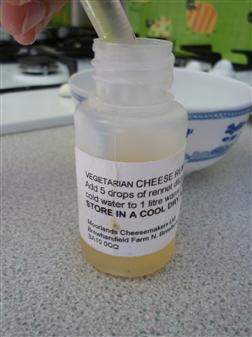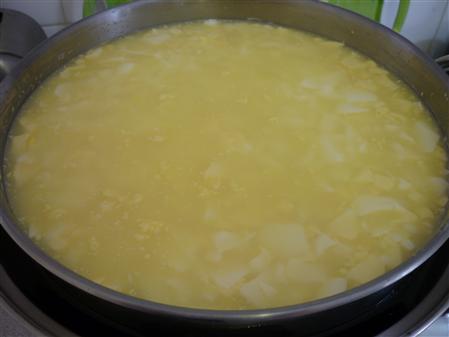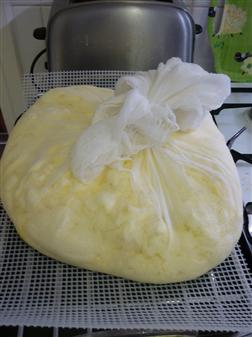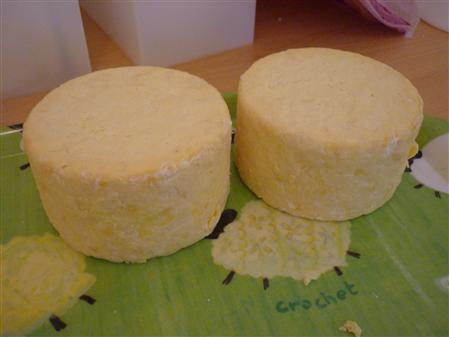Ingredients:
- 18 pints (around 10 litres) raw Guernsey milk
- 4ml vegetarian rennet
I recently learned through twitter (thanks @KarenHomer!) there was plenty of tasty raw milk available at the Notting Hill Farmers market from Hurdlebrook.
So come Saturday morning, we made the trek from South East London to pick up 20 pints of excellent Guernsey milk!
There was another raw milk supplier at the market – Buffalo Organics which may well get a visit soon for their raw buffalo milk!
The milk was heated to 29C, at which point the pH was 6.5. Add previously rehydrated Penicillum Roqueforti, Geotrichum Candidum and a small amount of DVI and stir well.
After around 45 minutes, add the 4ml vegetarian rennet, diluted in previously boiled and cooled water.
After a clean break was achieved, cut the curd into progressively smaller pieces until the curd ends up pea-sized.
Leave the curd to heal (sit in the whey) for an hour or so at around 28C, then scoop out into cheesecloth and leave to drain.
Once the curd has expelled most of it’s whey, and consolidated into a single mass, remove from cheesecloth.
Mill the curd mass into progressively smaller cubes, leaving pea-sized curd pieces.
Salt the milled curd, and transfer into clean moulds.
Leave to drain unpressed for 5 days, flipping each day.
Will update the post with the “rubbing up” next weekend!
Update: after 5 days of daily flipping, it’s time for “rubbing up”!
“Rubbing up” involves smoothing down the sides with a flat surface, to seal up the holes left by the curd settling.
This is to allow the rind to form cleanly.
Place in a cool, humid environment (12C @ 90% humidity) for a few weeks until the rind begins to form.
Will update once the rind has developed!


















Looks good. I typically use raw Guernsey milk when I make Camembert and have been very pleased with the results.
Pingback: Wondering whether I will ever have the time to make homemade cheese…? « Eat the Earth
Please can you let me know if you ever make a Guernsey cream cheese suitable for making cheese cake, I would love to know. Many thanks Jenny Madath
Pingback: Washed Rind Cheese with Andy Mahoney